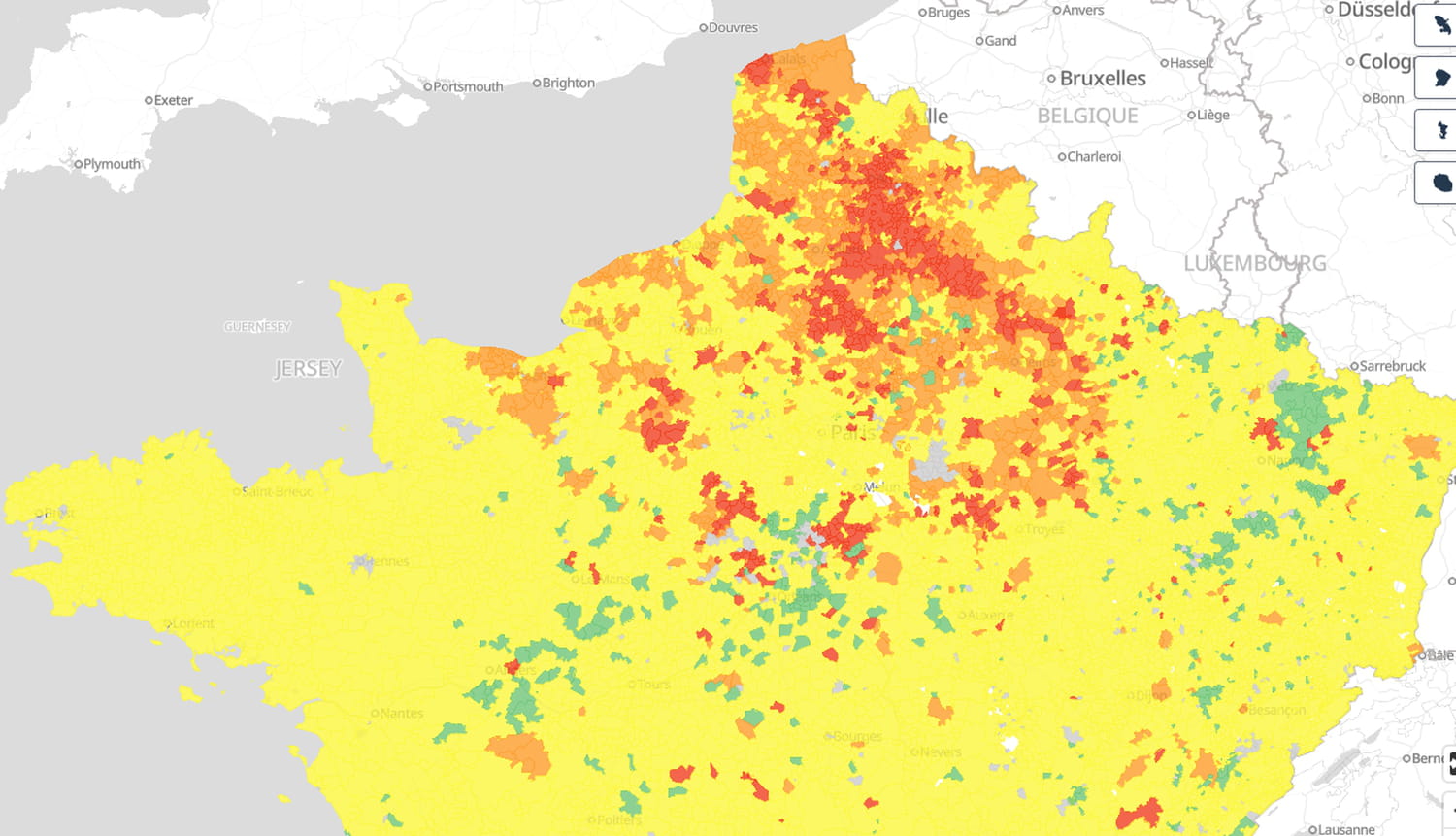Générations Futures and Data For Good have created an interactive map to find out the water quality, address by address.
Most French people are “mixed water drinkers”: they drink as much bottled water as tap water. But tap water still costs less. This is an increasingly attractive option, provided that it does not present health risks. Gold “it is very difficult to have a clear vision of its quality”, underline the Générations Futures and Data For Good associations. “The data exists, but it is difficult to access, complex, and above all unreadable.” Hence their idea to create an interactive map to find out if tap water can be consumed safely, depending on where you live.
What pollutants are found in tap water? Pesticides, nitrates, PFAS (per- and poly-fluoroalkyl substances), CVM (vinyl chloride monomer) and even perchlorates. These five major categories are represented in the “Dans Mon Eau” tool offered by Générations Futures and Data For Good. Drug residues are not recorded due to lack of available data, as is the microbiological or radiological quality of the water, which is subject to other controls.
This tool is based on data from health monitoring carried out by the Regional Health Agencies (ARS), presented for each water distribution network (called UDI, distribution unit). The map reflects the levels of pollutants measured in the water during the latest available analyses. It allows you to know the current state of the water and provides information on its compliance with the quality limits set by regulations and the health risk.
The card is free and accessible on the site dansmoneau.fr. It is very simple to use. All you have to do is type the name of your municipality or directly its address in the search field to see the results appear. The map is updated approximately every month. Please note: exceeding a quality limit indicates a deterioration in water quality but does not necessarily mean that there is a health risk. On the other hand, if a health limit is exceeded, the water should not be consumed.
In 2025, more than 87% of IDUs comply with regulations (and without exceeding health limits) according to Générations Futures. But there are strong territorial inequalities: certain areas are more affected by non-compliance, particularly for pesticide metabolites. The tool reports that in approximately 3% of IDUs (i.e. 709 networks) water “may be subject to recommendations to restrict consumption” for all or part of the population. Some municipalities may, moreover, appear without data: this means that the analyzes have not yet been published or do not cover all pollutants.









